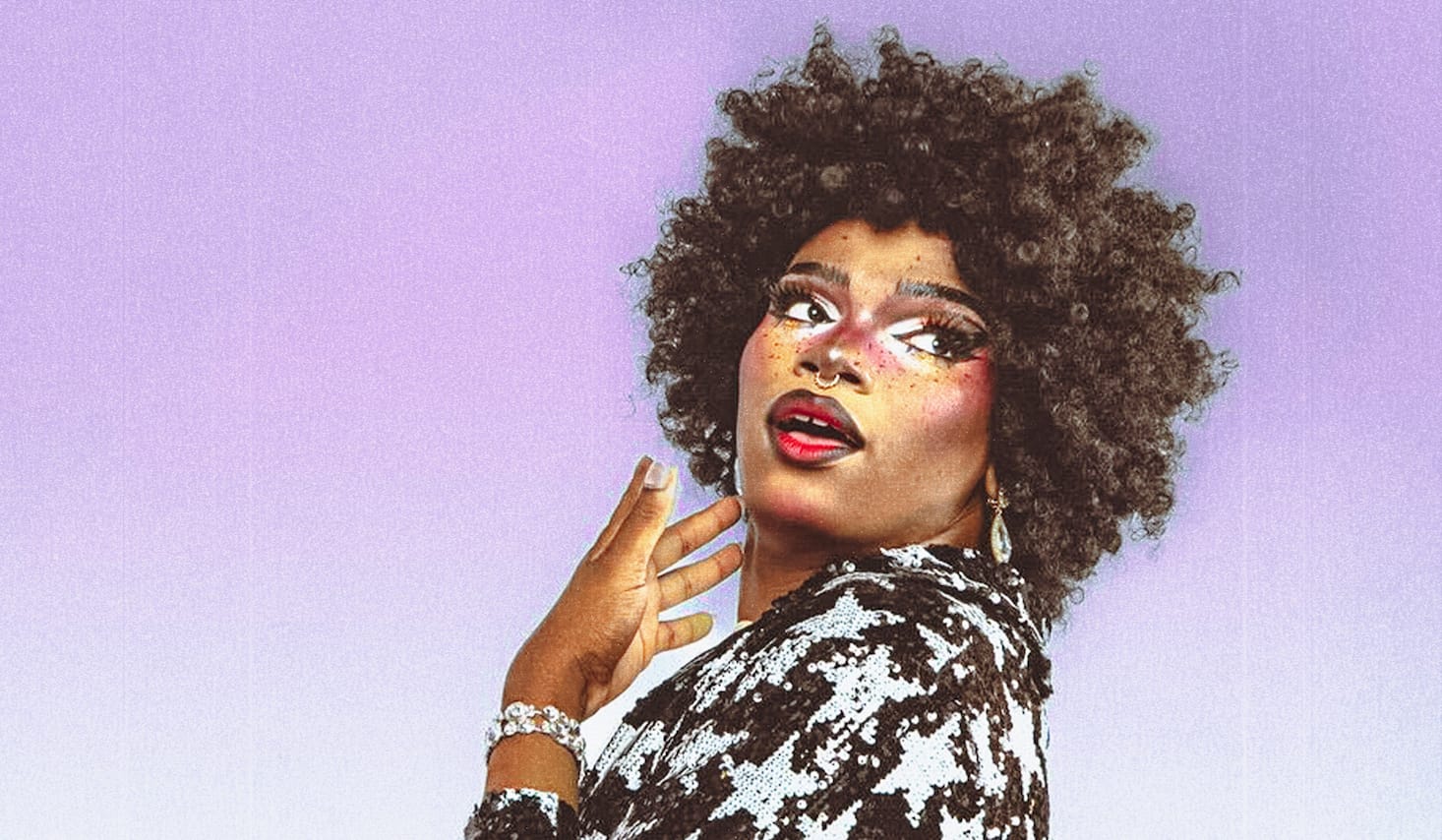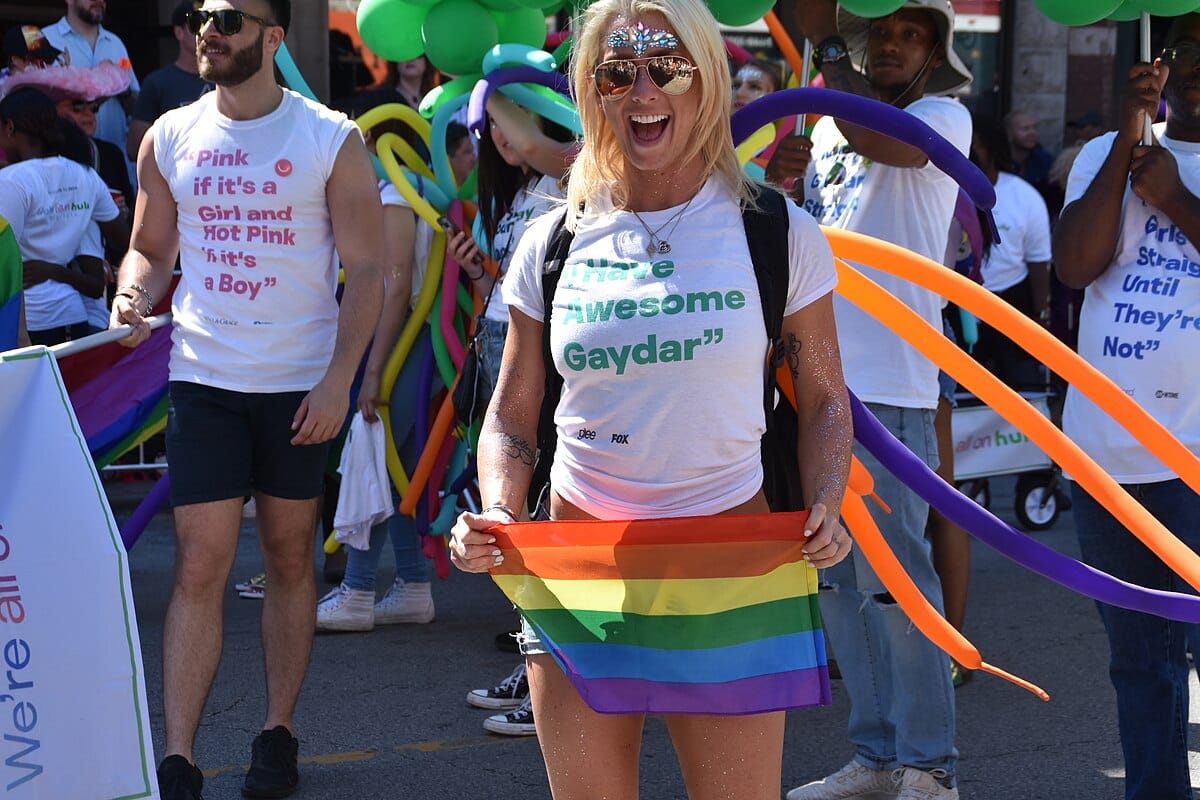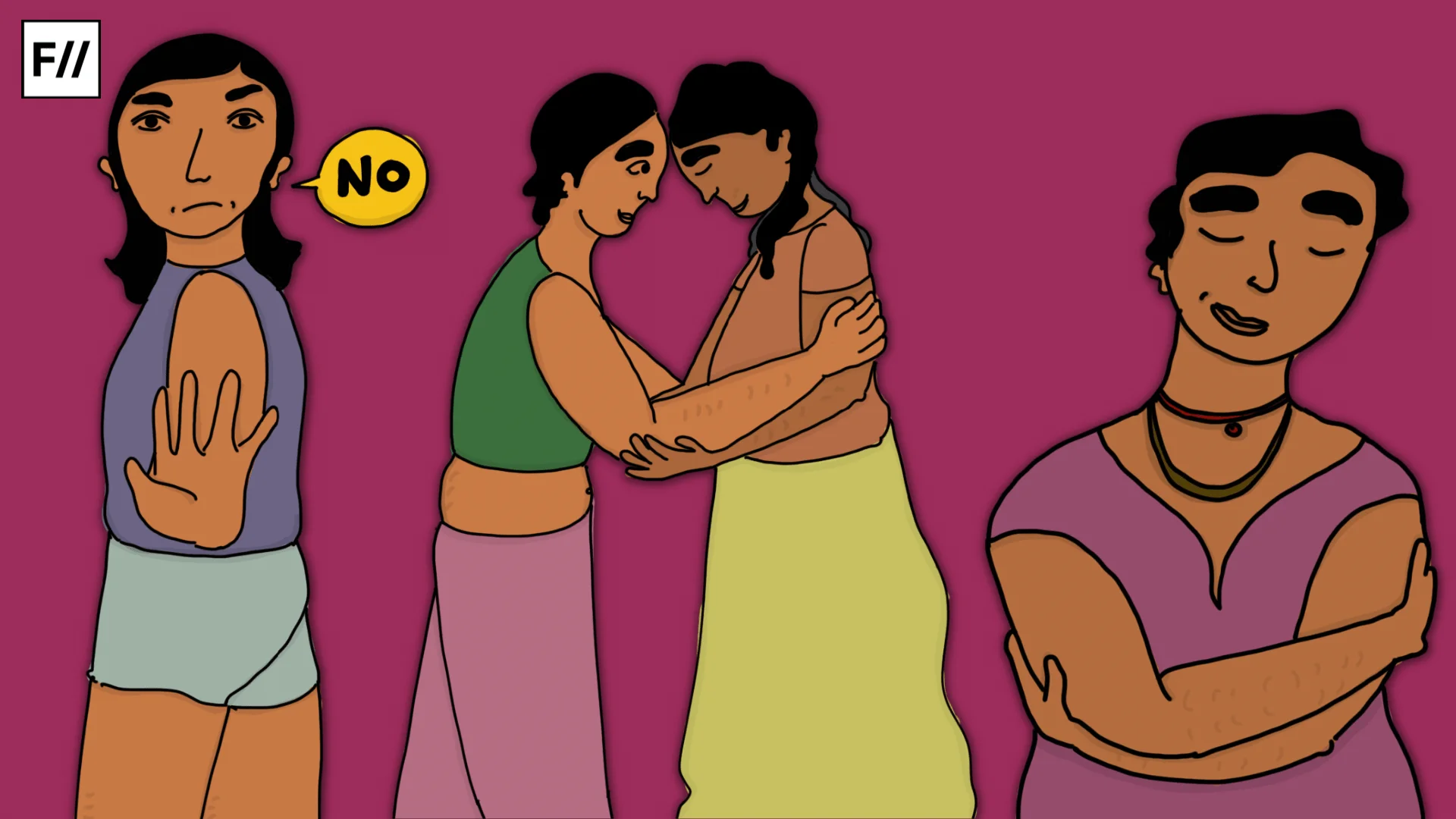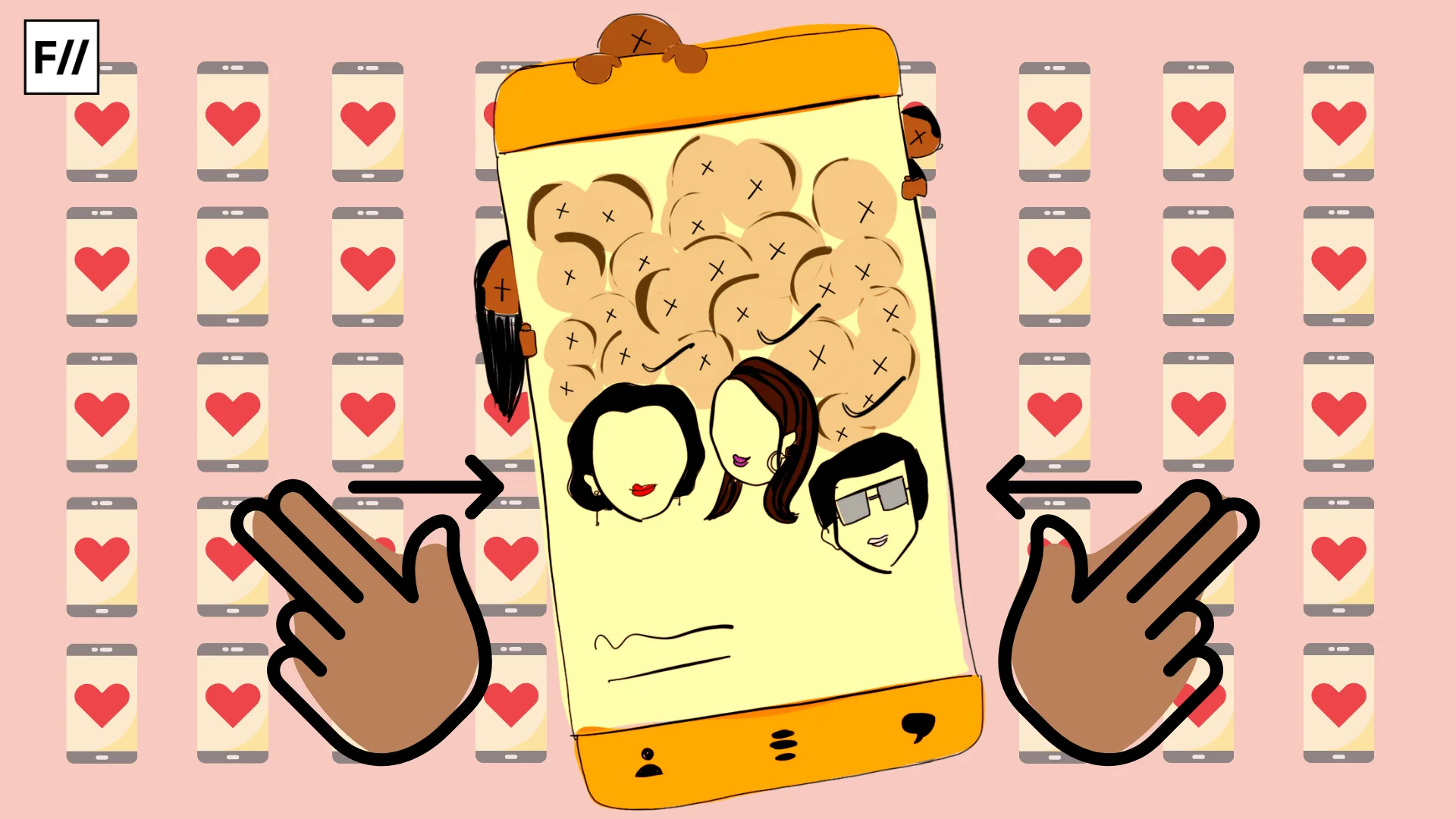Last month, I was at a local park, strolling by myself, when a group of particularly unique individuals stood out to me. I just knew they were like me, for reasons I can’t pinpoint. I felt an instant connection, despite not knowing even one of them. Giving in to my urges, I decided to approach them, and as I had guessed, they were indeed all queer. Thanks to my gaydar, I was able to find my community in a random crowd, at a completely unexpected place. That feeling of intuitively knowing someone is queer through an unknown, indescribable feeling is called “gaydar”. It is a feature unique to queer people who use it to find like-minded people and form a community. More scientifically, it is referred to as a special intuition or sensibility in queer people that is used to identify subtle characteristics in other queer people, resulting from the desire to battle the isolation associated with being queer and the basic human need to associate with similar people (Shelp, 2003).
The gaydar has proven to be very useful to queer people historically, especially in times and places where identifying as queer could lead to fatal consequences. Intuitively knowing someone else belongs to the community helps queer people to come out safely within the community while keeping their identity hidden from the rest of the world, thus protecting themselves from cruel consequences. The issue arises when it is wrongly labelled as instinctual, when at the foundation of gaydar lies social and sexual performativity, which is internalised and reproduced by queer people.
Limitations of gaydar in Desi Queer diversity
In the Indian context, queerness is performed and perceived from a very Western, Americanised lens. In fact, according to Kole (2007), before globalisation, South Asian gay men did not align with homosexuality as an identity but rather as a behaviour. Men used to engage in homosexual relationships with other men and called it “masti”, while refusing to identify as “gay” (Kole, 2007). They did not see their homosexuality or bisexuality as a part of an identity but instead as a behaviour that they enacted. These men were called MSM, or men who have sex with men.

Globalisation led to a more westernised understanding of queerness, and now upper-class-caste performance of queerness writes the blueprint for queer etiquette in India. According to gender scholar Judith Butler, in her book Gender Trouble (1990), gender is an act of repeated stylisation of the body, happening within the confines of strict social regulations. This accurately captures urban queer people, who use external signifiers like maintaining short hair, hair colouring, tattoos, piercings, etc., to perform their gender. These are the signs which thus inform the current stereotypes, forming the urban queer community’s gaydar, which recognises those who conform to these stereotypes while overlooking those who defy them. Nonconformity can be a result of various factors, including caste, class, location, access to resources, gender performance, or merely choice. Unifying the codes of queer performance not only dilutes the diversity of the community but also marginalises alternative forms of queer expression, pushing elitism in queer expression and understanding.
Gender binary and performance
The gaydar is a “skill” queer people strive to be accurate about. There’s a sense of pride in recognising another queer. While this is harmless behaviour on the surface, it creates pressure on both the perceiver and the perceived, which can result in the forced outing of those who aren’t ready. As a perceiver, if one’s gaydar recognises someone as gay, verification is only possible if that person aligns, reveals, and identifies themselves to me, a stranger. Not everyone has explored themselves, not everyone labels themselves, and everyone has the right to come out in their own time and space. Forcing a timing and label on other queer people risks being more exclusionary than inclusive because while being queer binds all queer people together, it is still just one aspect of our multilayered realities.
The gaydar is a “skill” queer people strive to be accurate about. There’s a sense of pride in recognising another queer. While this is harmless behaviour on the surface, it creates pressure on both the perceiver and the perceived, which can result in the forced outing of those who aren’t ready.
Two random people from any one community have more differences than similarities based on their individual lived experiences. The gaydar undermines intersectional differences of queer people, as it is based on one’s personal understanding of queerness, which they use to identify the rest. The gaydar Identifying wrongly can negatively impact both the perceiver and the perceived. While the perceiver is filled with self-doubt over an arbitrary sense of judgement of someone else’s gender or sexuality, the perceived might find coming out to strangers emotionally taxing. In worse cases, it can trigger gender dysphoria in transgender and nonbinary folks, who battle a disconnection between their sex and gender regularly. This indirectly pushes queer people to follow the popular gender norms in the hopes of being recognised by other people accurately. Our identities are not dependent on others’ recognition of them, but we do seek validation from others in the community, and that validation, not being unconditional, makes this a complex issue.
The term ‘metrosexual man’ refers to (usually straight) urban men with a strong sense of aesthetics, who enjoy hobbies and interests traditionally associated with women or gay men, like shopping and art (Pietsch, 2004). A metrosexual man today wears nail polish, baggy clothes, pink colours, jewellery, and more. These are typically associated with femininity and queer masculinity, but with the advent of pop culture, the strict rules around gender performance are now more easily compromised. A lot of straight women, too, are comfortable wearing masculine clothes, keeping short hair, gaining muscle, etc. But despite their gender perception and performance, they do not identify with the queer community. However, the gaydar, which relies on such social performances to identify queer people, might wrongly misinterpret these people’s sexual identity.

This system of identification based on external appearances draws strict boundaries around being cisgender-heterosexual and queer, usually polarising them at two extremes, unintentionally reinforcing toxic gender norms and expectations. People should be allowed to vary their appearance without constantly being judged for it; only then can the rigidity around gender binary and performance be undone. It also pushes the harmful narrative that gender and sexuality are so intrinsically related to performance that performing their gender within the traditional binary can change their identity as well—a narrative still used by numerous conversion therapists to change queer people’s gender and/or sexuality.
The politics of queer visibility
Some communities within the vast queer community risk more erasure and marginalisation due to constructs of a performance-based gaydar. Bisexuals, femme-presenting lesbians, masculine-presenting gays, trans and non-binary people, older queer people, etc., tend to be forgotten within the framework of the gaydar. The gaydar takes more into account alternative forms of expression, unironically marginalising the more conventional forms of gender representation, like femme women and masculine men.
This system of identification based on external appearances draws strict boundaries around being cisgender-heterosexual and queer, usually polarising them at two extremes, unintentionally reinforcing toxic gender norms and expectations. People should be allowed to vary their appearance without constantly being judged for it; only then can the rigidity around gender binary and performance be undone.
I have felt a subtle pressure to conform, too. Earlier, while experimenting with my gender expression, I enjoyed dressing masculine, wearing more pants and shirts with shorter hair, etc. Right now, I present more traditionally feminine. When I dressed masculine, I felt alienated from my identity as a woman but more aligned with my queer self. Now, the tables have turned. And I’m yet to strike a balance between these two seemingly conflicting parts of my identity. As a femme woman, I find myself overcompensating for my lack of queer presentation by colouring my hair, shaving my eyebrows, etc. While I enjoy doing these too, they serve a greater social purpose than just making me feel good. These external presentations mattered even more when I took my ex-boyfriend to attend a Pride March. My attraction to women constantly needs to be performed, even when I’m not open to dating, because I fear being misunderstood as a straight ally by other queer people when I am very much part of the community.
Conclusion
Thinking back, it wasn’t that ambiguous. Upon closer look, I noticed that the way the queer group dressed was comfortable yet stylish, the men were wearing makeup, and all of them had dramatic hand gestures. Was I stereotyping them? Yes, because they could be straight and flamboyant too. But I was right about feeling safe with them, which I think mattered most to me then. In doing so, however, I was, as a progressive queer person, reinforcing the same gender norms that hold the queer community back, while upholding a patriarchal, heteronormative society.
The gaydar was created as a defence mechanism but has increasingly become a tool of othering. When queerness is not a performance, queer identities should not be judged on the performance of their queerness. Diversity is one of the community’s biggest strengths, and we should commit to finding ways of preserving it, as, in diversity, lies queer liberation.





I personally feel like I always go with the set guidelines while analysing someone for queerness around me. I know and feel that this is not completely right, now I know for sure I need to improve. Thanks for the reminder.
Intriguing article 👌🏻💯